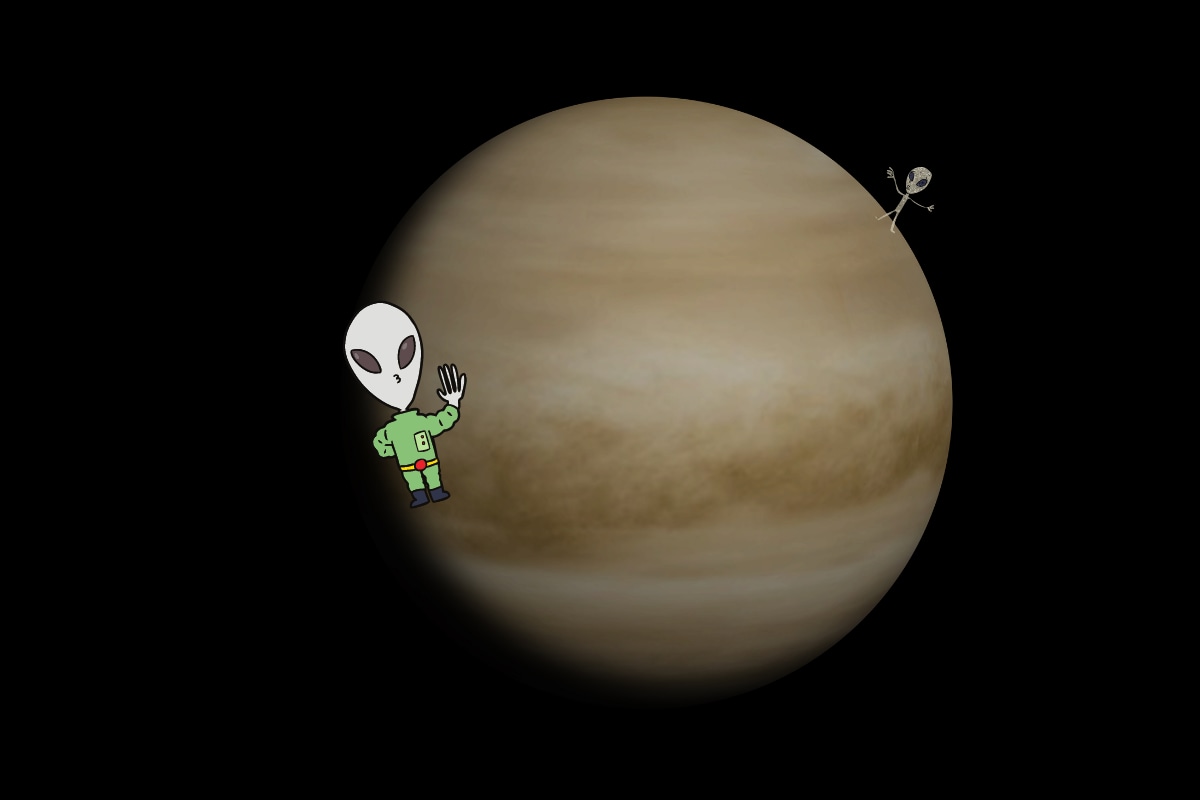

Image for representation. Credits: News18.
The researchers did not discover real life forms, but explained that on Earth, phosphine is produced by bacteria that thrive in environments without oxygen.
- News18.com
- Last update: September 15, 2020 8:17 AM M. IST
- FOLLOW US:
Is Venus where ET decided to call home?
Scientists revealed Monday that they have detected a gas called phosphine in the acidic clouds of Venus. The presence of phosphine indicates that microbes may inhabit Earth’s inhospitable neighbor, a tantalizing sign of potential life beyond Earth.
The researchers did not discover real life forms, but explained that on Earth phosphine is produced by bacteria that thrive in environments without oxygen. The international scientific team first detected phosphine using the James Clerk Maxwell telescope in Hawaii and confirmed it using the Atacama Large Millimeter / submillimeter Array (ALMA) radio telescope in Chile.
“I was very surprised, actually surprised,” said astronomer Jane Greaves. Reuters from Cardiff University in Wales, lead author of the research published in the journal Nature astronomy.
The existence of extraterrestrial life has long been one of the fundamental questions of science. Scientists have used probes and telescopes to search for “biosignatures,” indirect signs of life, on other planets and moons in our solar system and beyond.
“With what we currently know of Venus, the most plausible explanation for phosphine, fantastic as it may sound, is life,” said molecular astrophysicist at the Massachusetts Institute of Technology and study co-author Clara Sousa-Silva.
“I must emphasize that life, as an explanation for our discovery, should be, as always, the last resort,” added Sousa-Silva. “This is important because, if it is phosphine and if it is life, it means that we are not alone. It also means that life itself must be very common, and there must be many other inhabited planets throughout our galaxy. “
Are we then really alone? Most people on Twitter couldn’t believe it, but it’s the peak of 2020.
Ladies, men are from Mars and the planet they assigned us could have life.
– Kiran Manral (@KiranManral) September 14, 2020
I’m willing to bet Venus has a smarter life than a Trump rally.
– John Pavlovitz (@johnpavlovitz) September 14, 2020
us: WHEN IS # 2020 GIVING US ALIENS ?? Venus: hello
– Burger King (@BurgerKing) September 15, 2020
all my venus opinions, consolidated: 1. they are never aliens 2. it could be tho3. there have been “signs of life” on many planets for a long time4. this is pretty good, although 5. planets are amazing regardless of their habitability6. please don’t do a colonialism
– Charlotte Minsky (@extrasolarchar) September 14, 2020
WELCOME FRIENDLY VENUSIAN BACTERIA OVERLORDS, PLEASE TAKE CONTROL, WE ARE VERY FUCKED IN IT
– Wow, Aitch Cee (@Scriblit) September 14, 2020
Phosphine was observed at 20 parts per billion in the atmosphere of Venus, a minimal concentration. Greaves said the researchers examined possible non-biological sources such as volcanism, meteorites, lightning and various types of chemical reactions, but none seemed viable. Research continues to confirm the presence of life or find an alternative explanation.
Venus is the closest planetary neighbor to Earth. Similar in structure but slightly smaller than Earth, it is the second planet from the sun. Earth is the third. Venus is shrouded in a thick, toxic atmosphere that traps heat. Surface temperatures reach 880 degrees Fahrenheit (471 degrees Celsius), hot enough to melt lead.
.